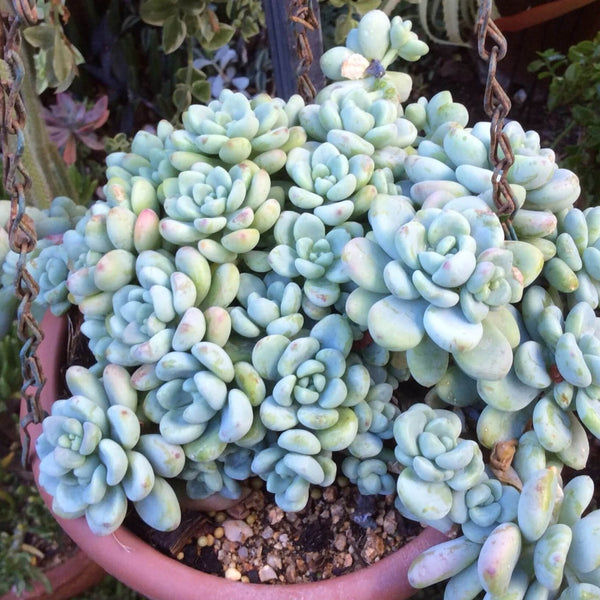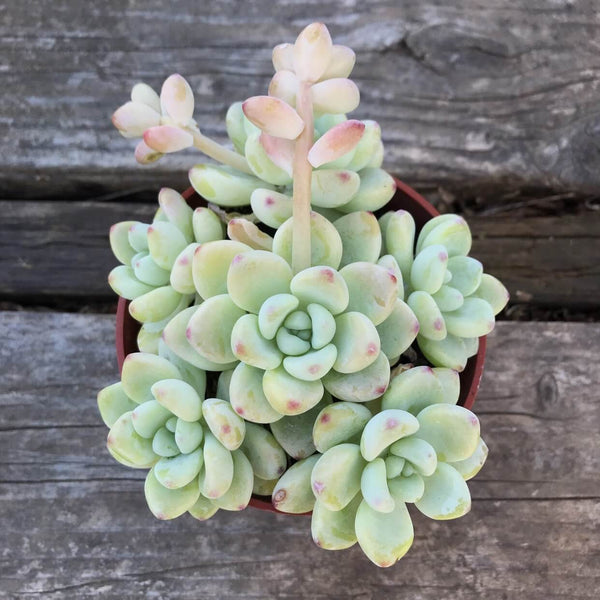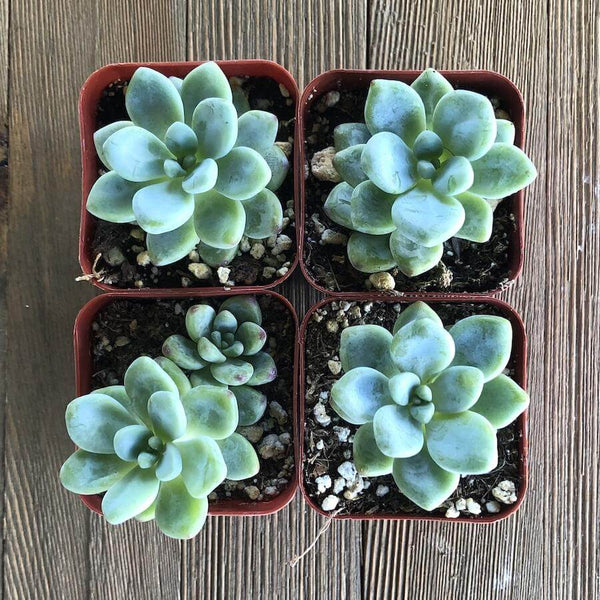Sedum Clavatum - 20 seeds
Sedum clavatum is a an attractive succulent up to 4 inches (10 cm) tall with stout creeping stems terminating in 2 inch (5 cm) wide rosettes of glaucus blue-green succulent leaves and has a compact inflorescence of many white star-shaped flowers in mid to late spring to early summer that take a pink hue with age. The stems lose their leaves as they elongate but are often covered by younger stems so the plant can look like a solid mat of attractive succulent gray colored rosettes.
HOW TO GROW?
When growing Sedum, keep in mind that plants need very little attention or care. They will thrive in conditions that many other plants thrive in, but will do just as well in less hospitable areas. They are ideal for that part of your yard that gets too much sun or too little water to grow anything else. A common name for Sedum is Stonecrop, due to the fact that many gardeners joke that only stones need less care and live longer. Sedum varieties vary in height. The smallest are just a few inches tall, and the tallest can be up to 3 feet (90 cm). The large majority of varieties are shorter and they are frequently used as ground covers in xeriscape gardens or rock gardens. Sedum varieties also vary in their hardiness. Many are hardy to USDA zone 3, while others need a warmer climate. Make sure the Sedum that you plant is suited to your hardiness zone. Sedums need no additional water or fertilizer. Overwatering and overfertilizing can hurt the plants far worse than not watering or fertilizing.
Sedum is easily planted. For shorter varieties, simply laying the plant on the ground where you want it to grow is normally enough to get the plant started there. They will send out roots from wherever the stem is touching the ground and root itself. If you would like to further ensure that the plant will start there, you can add a very thin covering of soil over the plant.
For taller varieties, you can break off one of the stems and push it into the ground where you would like to grow it. The stem will root very easily and anew plant will be established in a season or two.






